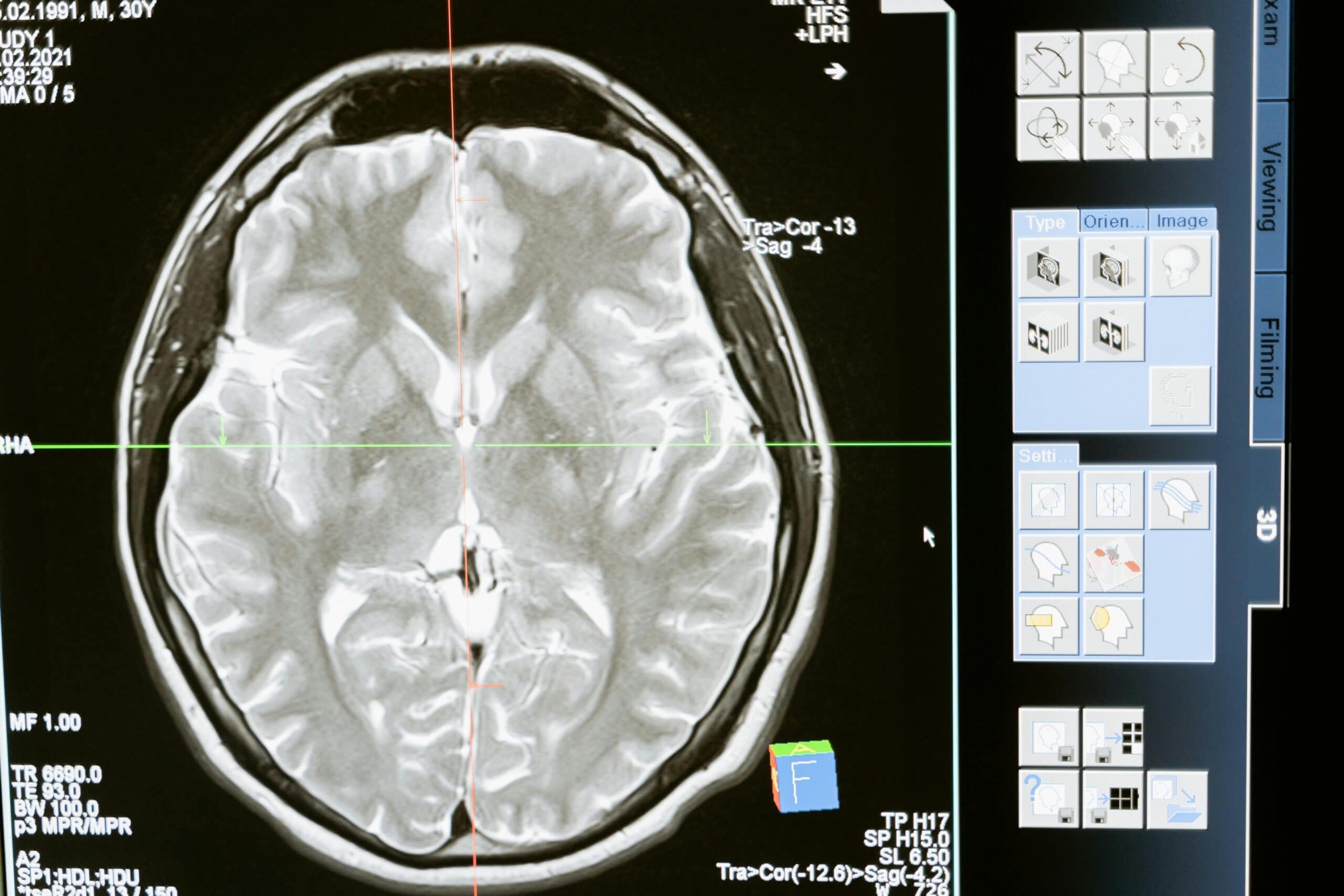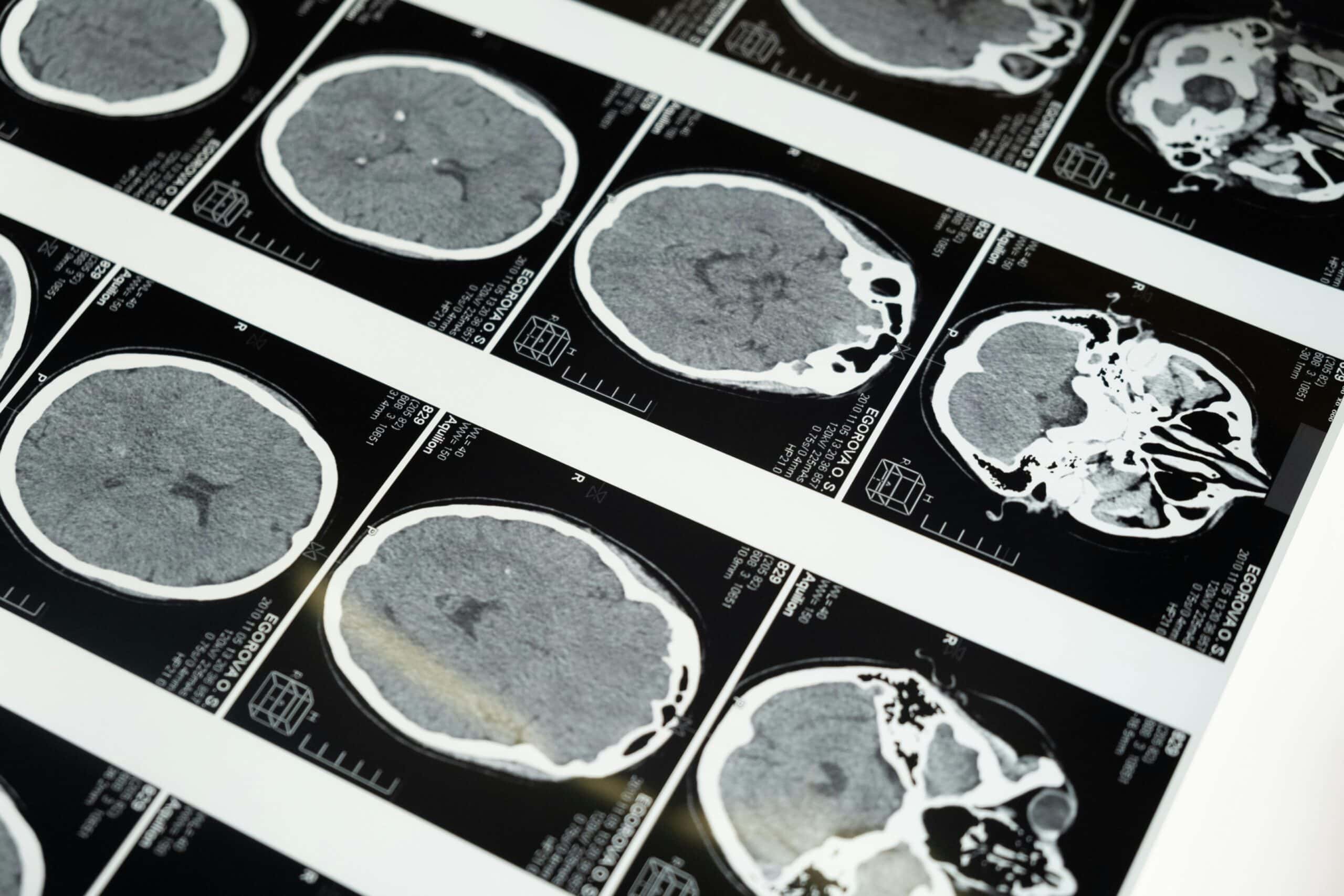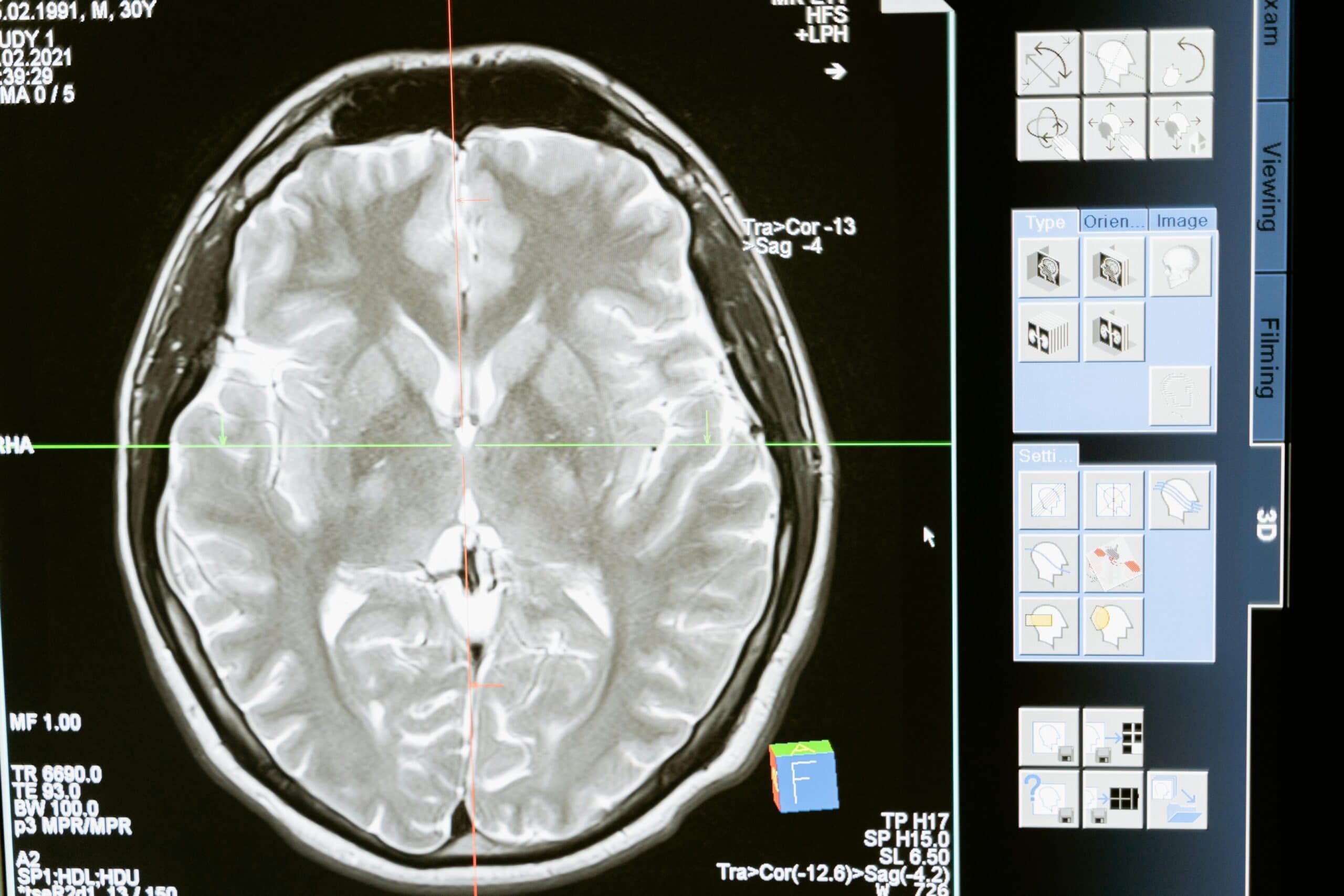
Traumatic brain injuries aren’t always physically visible—challenging the very idea of what an “injury” should look like.
Imagine waking up and forgetting your address. Or sitting at your desk, staring blankly at the login screen, unable to recall the password you’ve typed every day for years. These are just a few of the everyday struggles that brain injury victims quietly endure.
Unlike cuts or broken bones, TBIs often leave no visible mark. That’s what makes them so complex—and devastating. They’re silent disruptors, altering a person’s ability to think, work, or relate to others, often without anyone else noticing.
For many brain injury victims, the hardest part isn’t just recovering—it’s proving how deeply the injury has impacted every corner of their lives.
In this guide, we’ll walk you through everything you need to know about proving a brain injury for maximum compensation—from gathering strong medical evidence to understanding how courts evaluate damages. We’ll also explore how brain injury claims differ from other personal injury cases and why the right approach can make all the difference.
Brain Injuries: More Than Meets the Eye
Before building a strong brain injury claim, it’s crucial to understand the injury itself—and why proving it can be so complex. Unlike other personal injuries that leave visible scars, a traumatic brain injury (TBI) disrupts the brain’s normal function, often in ways that can’t be seen but are deeply felt.
A TBI can occur after a car accident, a sports injury, or even medical malpractice. Whether mild or severe, these injuries may not look catastrophic on the surface, but they often result in significant physical, emotional, and cognitive damage.
Many brain injury victims experience a wide range of symptoms depending on injury severity. While some suffer loss of consciousness or confusion immediately after the accident, others gradually notice changes in memory, mood, or speech patterns.
Common signs of a head injury or traumatic brain injury include:
Trouble concentrating or remembering details
Difficulty communicating clearly
Personality changes or mood swings
Depression, anxiety, or social withdrawal
These effects don’t just affect the injured person—they ripple through families, careers, and long-term financial security. In most brain injury cases, the road to recovery involves ongoing medical care, cognitive rehabilitation, and emotional support.
Unfortunately, many brain injury victims don’t receive immediate medical attention, which can weaken their claim later. That’s why it’s essential to document symptoms early, gather medical evidence, and consult an experienced personal injury attorney who understands the legal processes involved.
Understanding the Hidden Struggles of Proving a Brain Injury
Unlike a broken arm or visible laceration, a traumatic brain injury often hides behind normal imaging results—especially in the case of mild to moderate TBIs. This invisibility creates serious hurdles in a brain injury lawsuit, where insurance companies and insurance adjusters demand clear-cut, “visible” proof before offering a fair settlement.
Many brain injury victims don’t experience symptoms right away. Instead, their TBI symptoms—like memory lapses, fatigue, or mood swings—may surface days or weeks later, making it harder to prove that the injury stemmed directly from the accident.
To build a strong personal injury lawsuit and pursue maximum compensation, you must:
Prove that someone else’s negligence caused the injury (such as an at-fault party in a car accident or a careless physician in a medical malpractice case)
Demonstrate cognitive impairments, mental anguish, and significant physical or emotional trauma
Gather comprehensive medical evidence, including diagnostic imaging, expert assessments, and detailed accident reports
Example Scenario:
Consider Sarah, a fictional 32-year-old teacher whose story reflects the real-life struggles many brain injury victims face after an accident. After being rear-ended by a distracted driver, she felt a little dizzy but dismissed it as shock. Weeks later, she began forgetting lesson plans, reacting irritably toward coworkers, and struggling to get through her day. A neurologist diagnosed her with a traumatic brain injury, and a neuropsychologist documented clear cognitive impairments.
With help from her brain injury attorney, Sarah pursued a brain injury claim backed by:
Medical records and ER documentation
Expert evaluations from neurologists and mental health professionals
Witness testimony from coworkers and family members
Evidence of lost income, mental anguish, and emotional disruption
In this hypothetical scenario, Sarah’s legal team pursued compensation for medical bills, ongoing care, and projected future expenses—outcomes that depend on case-specific evidence and legal strategy.
What You’ll Gain from This Guide
Whether your condition stems from catastrophic brain injuries, sports injuries, or a mild head injury, proving your case requires more than just describing your symptoms. It requires strategy, evidence, and legal insight.
In the rest of this guide, you’ll learn how to:
Navigate personal injury claims involving brain injuries
Gather evidence that resonates with juries and insurance providers
Keep reading to discover exactly how to protect your future, hold the at-fault party accountable, and demand the fair compensation you deserve.
Types of Brain Injuries and Common Causes
Brain injuries affect accident victims in drastically different ways. Some individuals recover in weeks, while others live with lasting impairments. The injury severity often shapes both the recovery timeline and the viability of a traumatic brain injury claim.
Medical professionals categorize traumatic brain injuries (TBIs) based on the extent of damage and the circumstances that caused the trauma. These categories carry different legal implications and affect how a brain injury lawyer builds a case to pursue fair compensation.
Types of Brain Injuries
1. Concussions (Mild TBIs)
A mild traumatic brain injury occurs when a jolt or impact causes the brain to move within the skull. While often dismissed, even a single concussion can lead to significant physical and emotional symptoms like memory lapses, irritability, or chronic fatigue. Medical experts warn that repeated concussions can contribute to long-term cognitive decline and, in some cases, severe brain trauma.
2. Moderate TBIs
These injuries involve prolonged confusion or unconsciousness and typically require ongoing medical care and rehabilitation. Though not always visible on imaging scans, they may cause permanent cognitive impairments and qualify for higher TBI settlement values determined by medical documentation.
3. Severe TBIs
Severe brain injuries often result in coma, paralysis, or long-term permanent disability. Victims may lose the ability to work, communicate, or live independently. These cases demand a personal injury attorney who can secure maximum compensation through expert testimony, medical evidence, and a well-documented life care plan.
4. Closed-Head Injuries
These occur when trauma damages the brain without fracturing the skull, such as during a car accident or fall. Since the injury is internal, it’s easy for insurance companies to dispute its severity—making it essential to gather evidence like MRIs, medical records, and accident reports.
5. Penetrating Injuries
These involve a foreign object piercing the skull—common in workplace accidents or gun-related incidents. They almost always require emergency medical attention and can result in lifelong impairment or even death. Such cases often include claims for punitive damages due to extreme negligence.
Common Causes of Brain Injuries
Most brain injury claims stem from preventable incidents where someone else’s negligence played a role. Here are the leading causes seen in personal injury claims.
1. Car Accidents
One of the most common sources of TBIs. Even without a direct blow, the sheer force of impact can jostle the brain violently. Victims may not immediately show TBI symptoms, making prompt medical attention and thorough documentation essential.
2. Falls
Whether on the job, at home, or in public, falls are a major cause of head injuries—especially among the elderly. In these cases, the circumstances surrounding the fall (wet floors, lack of railings, poor lighting) matter when establishing liability.
3. Sports Injuries
From football to hockey, sports injuries can cause repeated concussions. Coaches or schools that fail to respond appropriately may face a personal injury lawsuit, especially if there’s a delay in medical attention or return-to-play protocols.
4. Workplace Accidents
Falling objects, machinery mishaps, or unsafe work environments can result in TBI. Employers who disregard safety standards may be liable in most brain injury cases—especially if insurance coverage is lacking or insufficient.
5. Medical Malpractice
Errors like delayed diagnoses, anesthesia mistakes, or surgical complications can lead to oxygen deprivation and brain damage. Victims of medical malpractice often require an experienced personal injury attorney to build a complex but compelling brain injury lawsuit.
Understanding the type of brain injury, the events that caused it, and the legal consequences helps victims and their families build stronger personal injury claims—and pursue the fair settlement they need to recover physically, emotionally, and financially.
Understanding Traumatic Brain Injury and Its Legal Implications
A traumatic brain injury (TBI) occurs when a sudden jolt, blow, or penetrating object disrupts normal brain function. These injuries range from mild concussions to catastrophic brain injuries that leave victims with permanent disabilities and long-term care needs.
In the context of a personal injury lawsuit, a brain injury isn’t enough by itself. The success of a traumatic brain injury claim depends on proving three things: that the injury occurred, that it was caused by someone else’s negligence, and that it has caused significant, ongoing harm—physically, emotionally, and financially.
In most brain injury cases, the injured party must show that someone else’s negligence directly caused their condition. This may include an at-fault party in a car accident, a negligent coach in sports injuries, or a healthcare provider responsible for medical malpractice. Unlike in criminal cases, brain injury lawsuits rely on a preponderance of the evidence—meaning the injured person must prove that it’s more likely than not that the defendant’s actions caused their traumatic brain injury. Insurance companies and defense attorneys often challenge the validity of traumatic brain injury claims. As such, victims must gather evidence that supports their narrative and proves the injury’s lasting consequences.
To build a strong brain injury claim and obtain the recovery you deserve, you’ll need to gather:
Accident reports and timely documentation: To link the injury to a specific incident and establish liability
Diagnostic imaging (MRIs, CT scans): Provides critical medical evidence to support the severity of the injury
Neurological assessments by experts: To clarify the scope of cognitive impairments and prognosis
Testimony from family, coworkers, or caregivers: Helps demonstrate how the injury affects daily life and mental health
Comprehensive medical records and treatment notes: Documents ongoing medical care and outlines future medical expenses
Proof of lost wages and reduced earning capacity: Strengthens claims for economic damages and fair settlement
For victims navigating the aftermath of a TBI, legal strategy matters as much as medical recovery. Without proper documentation and legal representation, even severe injuries can be undervalued or dismissed.
Diagnostic Imaging and Medical Evidence
When it comes to brain injury claims, tests like MRIs, CT scans, and PET scans can reveal internal bleeding, swelling, or damaged brain tissue, helping doctors confirm the presence and injury severity of a traumatic brain injury, making them a powerful element to strengthen your claim.
Although mild TBIs don’t always appear on scans, imaging is crucial for identifying more severe brain injuries and ruling out other conditions. These results are often the first pieces of evidence reviewed by insurance companies, insurance adjusters, and defense attorneys during a personal injury lawsuit.
Beyond imaging, a strong brain injury claim requires complete medical records that document the full scope of physical injuries, treatments, and recovery efforts. These documents serve as a roadmap for calculating medical bills, future medical expenses, and long-term care needs.
Important records to gather include:
ER and hospital admission reports: Establish the immediate aftermath and emergency care provided
Surgery and treatment documentation: This shows the medical interventions required post-injury
Physical therapy and rehabilitation notes: Tracks mobility, cognitive recovery, and progress over time
Cognitive assessments: Confirms issues with memory, attention, or reasoning through formal testing
Neurological evaluations: Offers expert insight into lasting damage, functionality, and prognosis
In most brain injury cases, this combination of imaging and treatment documentation lays the groundwork for a fair settlement or courtroom award. These records are often what determine TBI settlement values—making them some of the most important tools in proving a case and pursuing fair compensation for the injured person.
Demonstrating Cognitive and Emotional Impacts
While some effects of a traumatic brain injury are visible through imaging, others are much harder to prove—yet equally life-altering. Many brain injury victims suffer from cognitive impairments that impact their ability to focus, remember details, or communicate clearly. These deficits often interfere with jobs, relationships, and daily routines.
Alongside cognitive decline, emotional trauma is common. Victims may experience depression, anxiety, mood swings, or even major personality changes. These symptoms may not leave physical marks, but they significantly diminish the quality of life and signal the need for ongoing medical care and emotional support.
To substantiate these non-visible injuries, personal injury claims often rely on neuropsychological evaluations conducted by licensed specialists. These tests assess attention span, reasoning, memory, and language skills and then compare results to baseline norms or pre-injury functioning.
Supporting evidence in these personal injury claims often includes:
Personal diaries documenting memory lapses, confusion, or emotional breakdown
Testimony from family members, coworkers, or caregivers who’ve witnessed behavioral changes
Video documentation of daily challenges and functional limitations
Expert psychological evaluations addressing mental anguish, emotional distress, and long-term physical pain
These records become essential when insurance companies question the severity of TBI symptoms. They help illustrate the full human cost of the injury, empowering victims to secure rightful compensation for long-term hardship, reduced quality of life, and future care needs.
In many cases, this type of gathering evidence makes the difference between a minimal offer and a meaningful brain injury settlement.
Long-Term Disability and Life Care Plans
In cases involving severe or catastrophic brain injuries, victims often face permanent disability that alters every aspect of daily life. Pursuing maximum compensation in these situations requires a forward-looking approach—one that accounts for years, or even decades, of care needs.
Working with medical and vocational experts to create a detailed life care plan helps outline the full scope of future medical expenses and support services the injured person will require.
A comprehensive life care plan may include:
Surgeries, treatments, and specialized follow-ups
Home modifications for accessibility
Assistive technology for mobility or communication
Ongoing medical care and long-term physical therapy
Daily living assistance, such as home nurses or aides
Transportation needs for therapy or appointments
Projected medical expenses for the remainder of the victim’s life
Courts and insurance companies rely on these plans to assess fair compensation and assign a financial value to future losses. In most brain injury cases involving long-term disability, a robust life care plan can significantly increase the TBI settlement values determined by judges or insurers—making it one of the most powerful tools in a brain injury claim.
Calculating Compensation: Damages in Brain Injury Lawsuits
One of the main goals of a brain injury lawsuit is to restore the injured person—financially and emotionally—to the life they would have lived if the accident had never occurred. That means compensating for all the physical injuries, emotional distress, and financial losses linked to the injury.
Below are the various types of damages based on the injury severity, prognosis, and the supporting evidence available.
Economic Damages:
These cover tangible, documented financial losses:
Medical bills and ongoing medical care: All past and current expenses related to the injury
Lost wages and future lost income: Compensation for time missed at work and diminished future earning capacity
Physical therapy and rehabilitation: Critical for recovery from TBI symptoms and restoring daily function
Transportation costs for treatment: Especially relevant in cases requiring frequent travel to specialists
Future medical expenses: Long-term costs tied to permanent or progressive impairments
Non-Economic Damages:
These address pain and emotional losses that are harder to quantify:
Physical pain and suffering: Ongoing discomfort, headaches, fatigue, and reduced physical capabilities
Mental anguish: Emotional trauma such as anxiety, depression, or PTSD
Loss of enjoyment of life: No longer being able to participate in activities once enjoyed
Permanent disability: Life-altering limitations that affect independence, career, or relationships
Punitive Damages (in cases of gross negligence):
These damages don’t compensate the victim—they’re meant to punish the at-fault party for extreme misconduct and deter future negligence.
Each brain injury settlement reflects the unique circumstances of the incident and the strength of the legal argument presented by your injury lawyer. That means compensating for all the physical injuries, emotional distress, and financial losses linked to the injury.
What to Document for a Strong Brain Injury Claim
To help your brain injury lawyer build the strongest possible case and achieve fair compensation, make sure you gather and preserve the following:
From the Scene:
Accident reports
Photos or video evidence
Eyewitness contact info & statements
Medical Records:
ER and hospital documentation
Diagnostic imaging & lab results
Physical therapy notes & evaluations
Financial & Functional Impact:
Lost wages and pay stubs
Receipts for medical bills and care expenses
Journals or notes on TBI symptoms and daily challenges
Navigating Insurance Tactics and Legal Hurdles
In many brain injury cases, insurance companies attempt to reduce payouts by questioning the legitimacy or severity of the injury—especially when TBI symptoms are not immediately visible. They may argue the symptoms are unrelated, preexisting, or exaggerated.
Legal and procedural hurdles often include:
Disputes over insurance coverage
Challenges to medical records or delayed medical attention
Undervaluing future medical expenses, lost wages, or mental anguish
Navigating these barriers requires timely documentation, clear medical evidence, and an understanding of how to counter tactics used by insurance adjusters.
Why You Need an Experienced Brain Injury Attorney
Brain injury cases are among the most complex personal injury claims. Many brain injury victims don’t realize the extent of their damage until months later. Symptoms can be subtle or masked by other severe injuries. An experienced personal injury attorney knows how to uncover and present compelling evidence that resonates with judges and juries.
Identifies and documents TBI symptoms and injury severity
Coordinates with medical professionals and expert witnesses
Presents a compelling, well-organized case grounded in medical records and legal standards
Handles the legal processes involved, from insurance paperwork to court preparation
Pursues maximum compensation for long-term needs like future medical expenses, lost income, and emotional damages
With the right legal guidance, you’re never alone. Your attorney understands your rights, coordinates medical support, and works tirelessly to secure a full financial recovery.
Statutes of Limitations for Brain Injury Claims
Every state limits the amount of time brain injury victims have to file a lawsuit. These laws, called statutes of limitations, vary based on location and circumstances.
Colorado:
For personal injury claims, including traumatic brain injury claims, victims typically have 2 years from the date of injury to file. (Colorado Revised Statutes §13-80-102 (1)(a)).
If the injury occurred in a motor vehicle accident, the limit is extended to 3 years. (Colorado Revised Statutes §13-80-101(1)(n))
Nevada:
For personal injury claims, including traumatic brain injury, the statute of limitations is generally 2 years from the date of the incident (NRS §11.190(4)(e)).
California:
Victims must file a personal injury lawsuit within 2 years of the injury (Cal. Civ. Proc. Code §335.1).
If the injury involves a public entity or government employee, a government claim must be filed within 6 months of the incident (Cal. Gov. Code §911.2).
Failing to meet these deadlines may result in the loss of the right to pursue compensation. Always consult a personal injury attorney as soon as possible.
Missing these legal deadlines can forfeit your right to seek compensation. Therefore, it is recommended to consult a licensed personal injury attorney in your jurisdiction for legal guidance.
Let Bourassa Law Group Fight for You
Navigating a brain injury lawsuit is overwhelming—especially when you’re dealing with pain, uncertainty, and mounting financial pressure. At Bourassa Law Group, we understand the physical, emotional, and legal challenges that brain injury victims face every day. That’s why we approach each case with both compassion and strategic legal skill.
If you or a loved one has suffered a traumatic brain injury due to someone else’s negligence, don’t wait. Our experienced personal injury attorneys are ready to gather the right evidence, manage difficult insurance companies, and help you pursue fair compensation for your recovery and future needs.
Whether your case involves severe injuries, sports injuries, or a car accident, we’re here to support you every step of the way. Contact us today for a free consultation, and let us help you build a strong personal injury lawsuit and secure the justice you need to heal and move forward.





